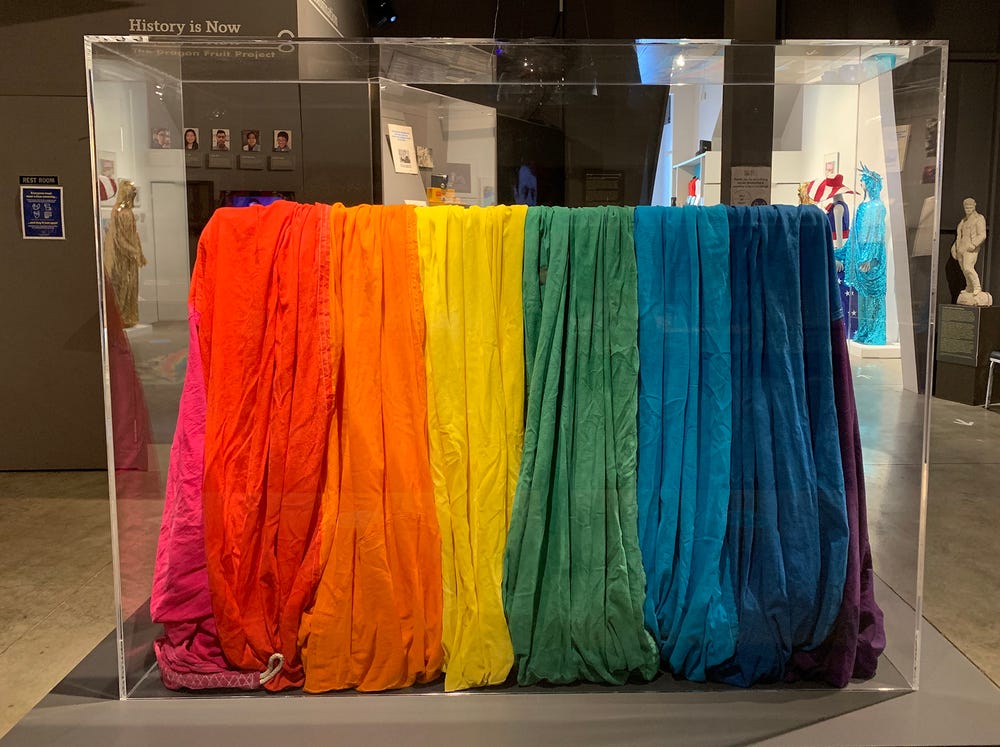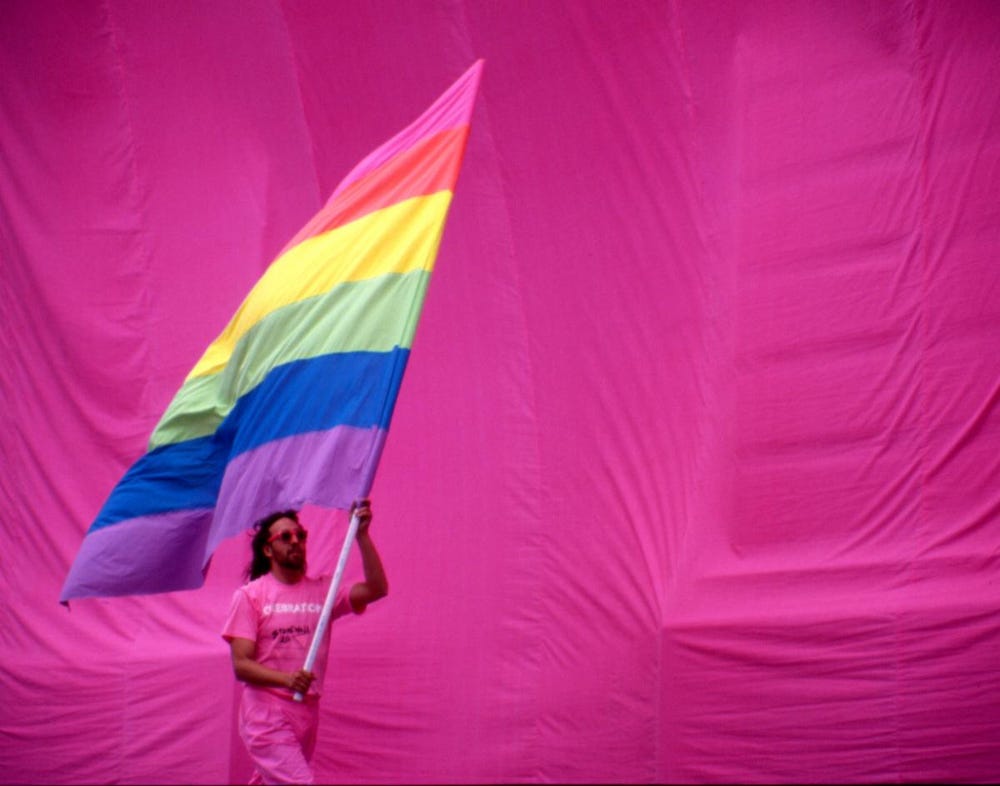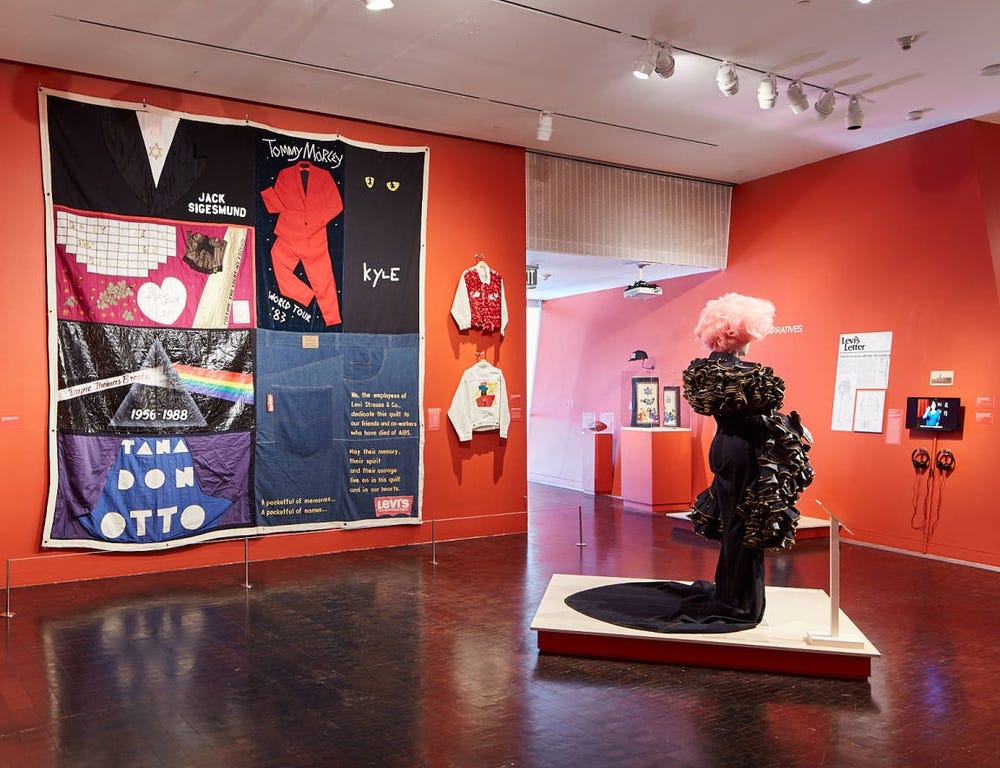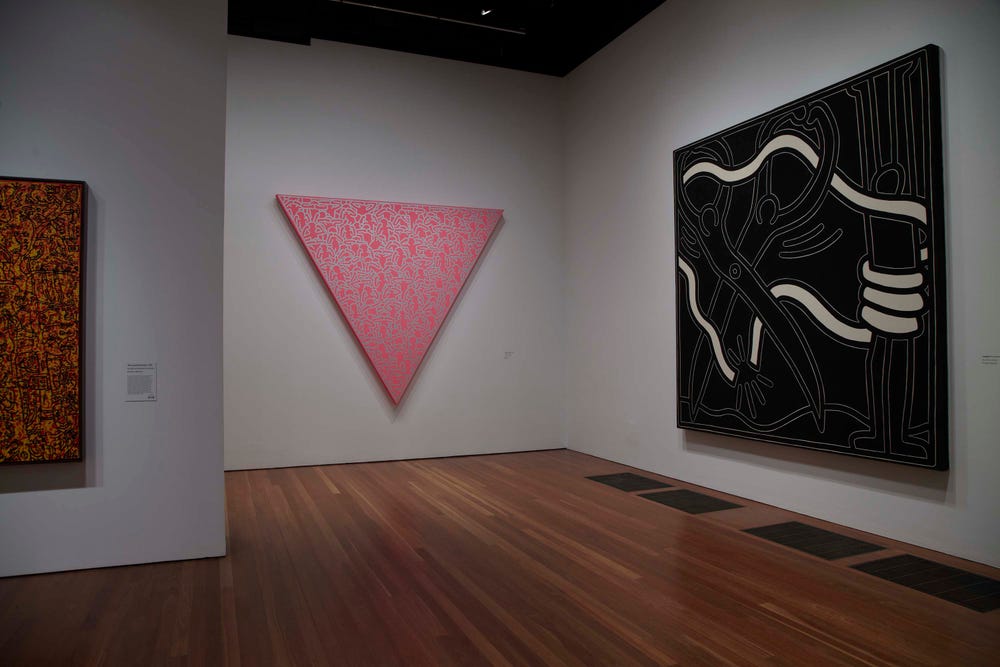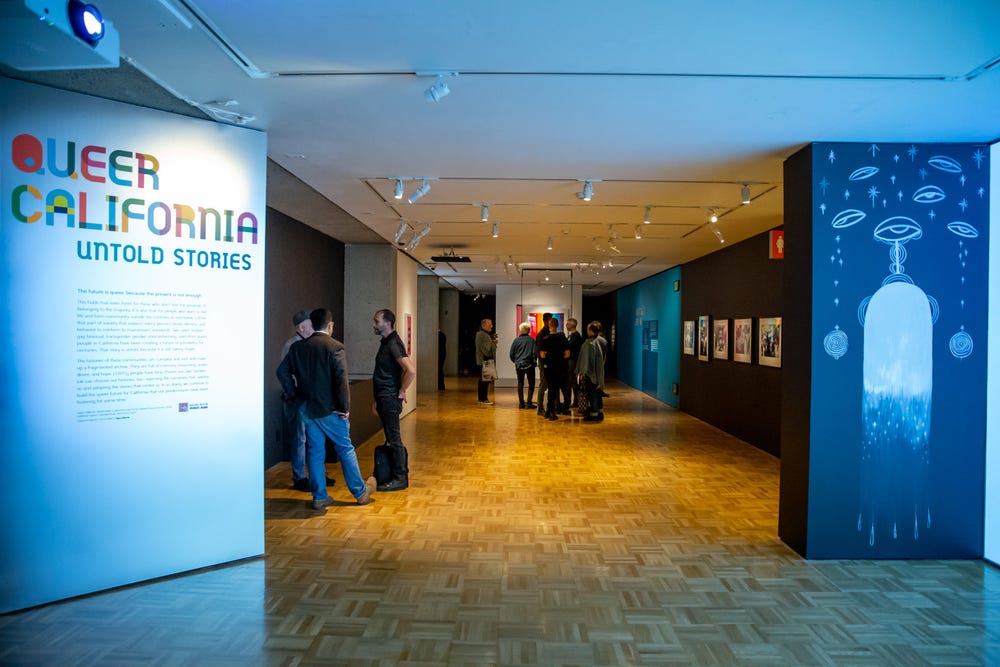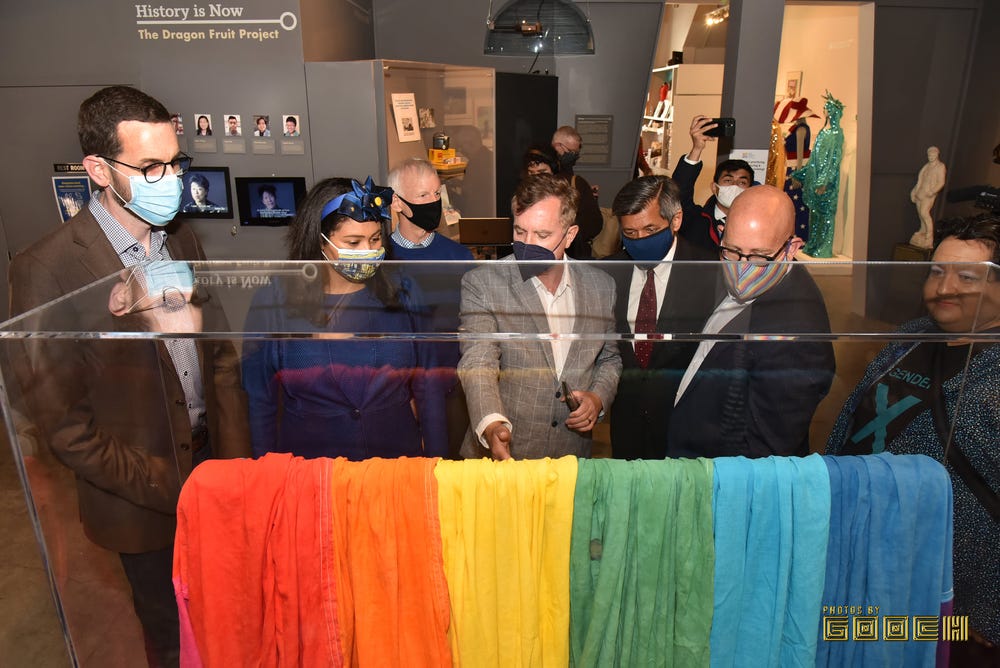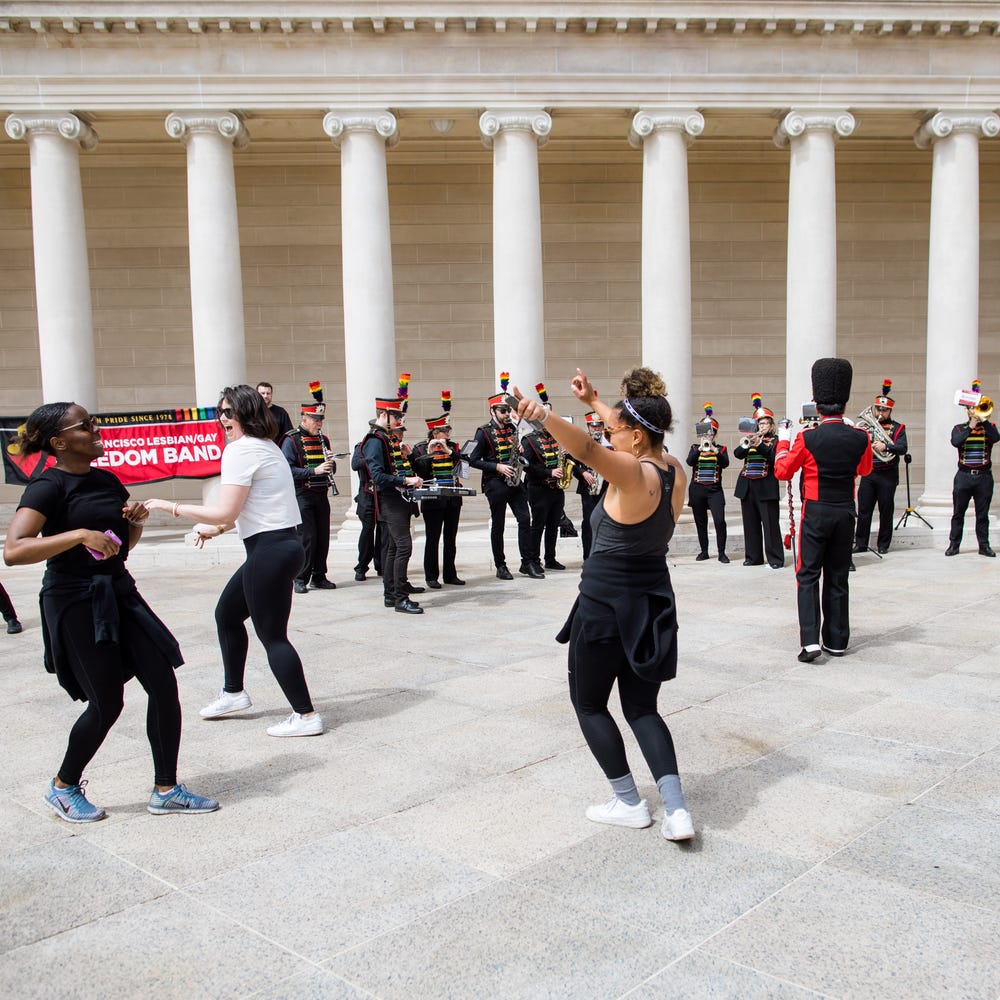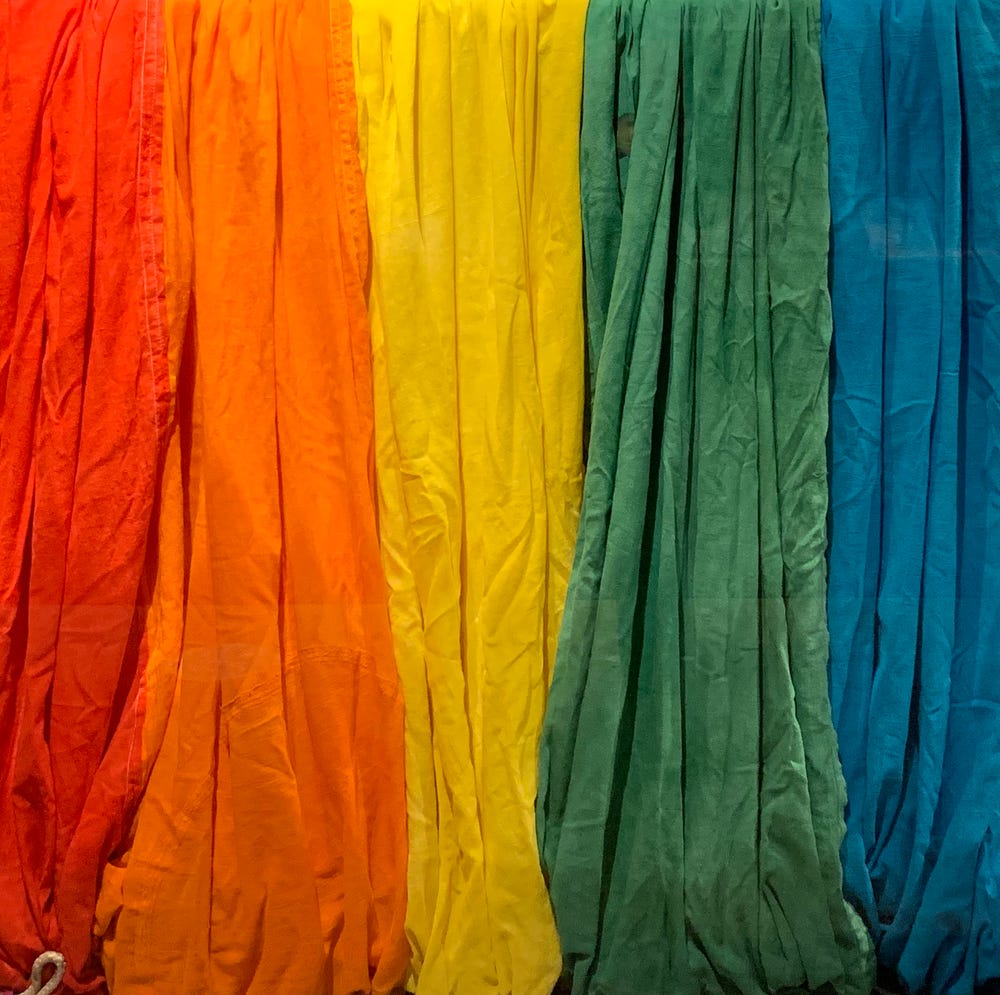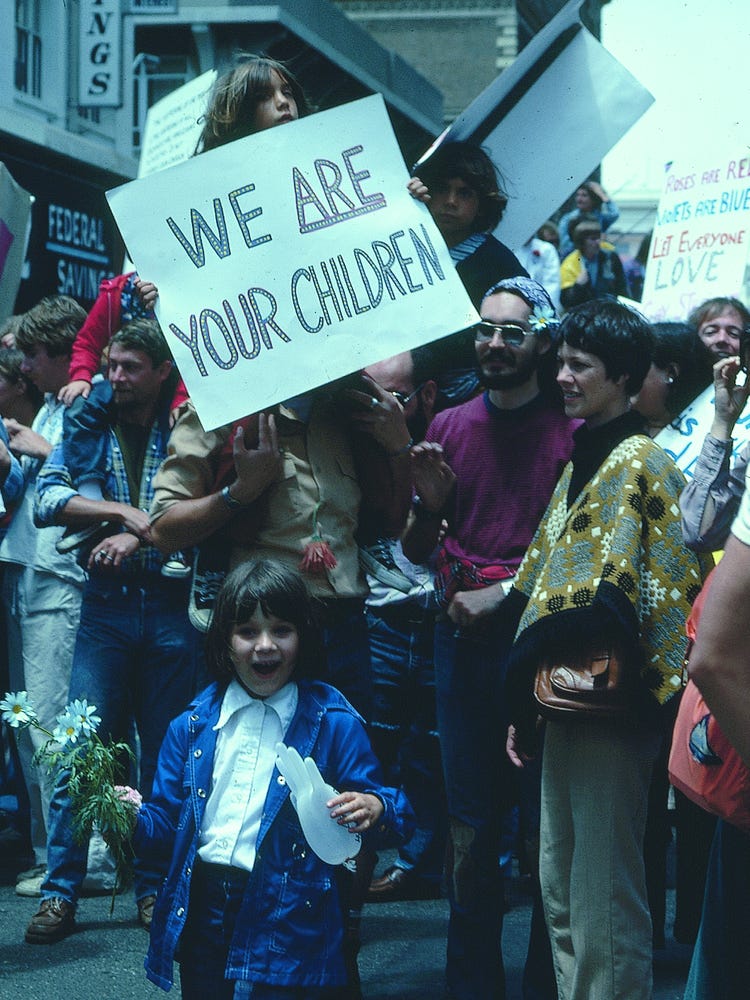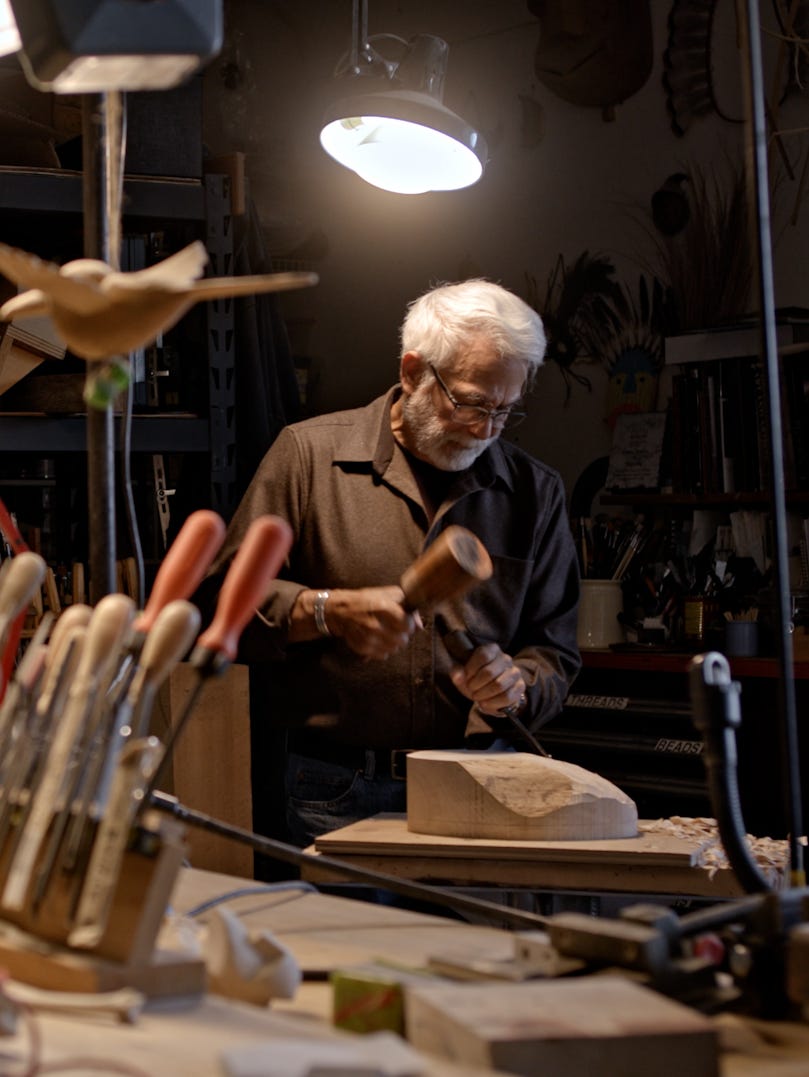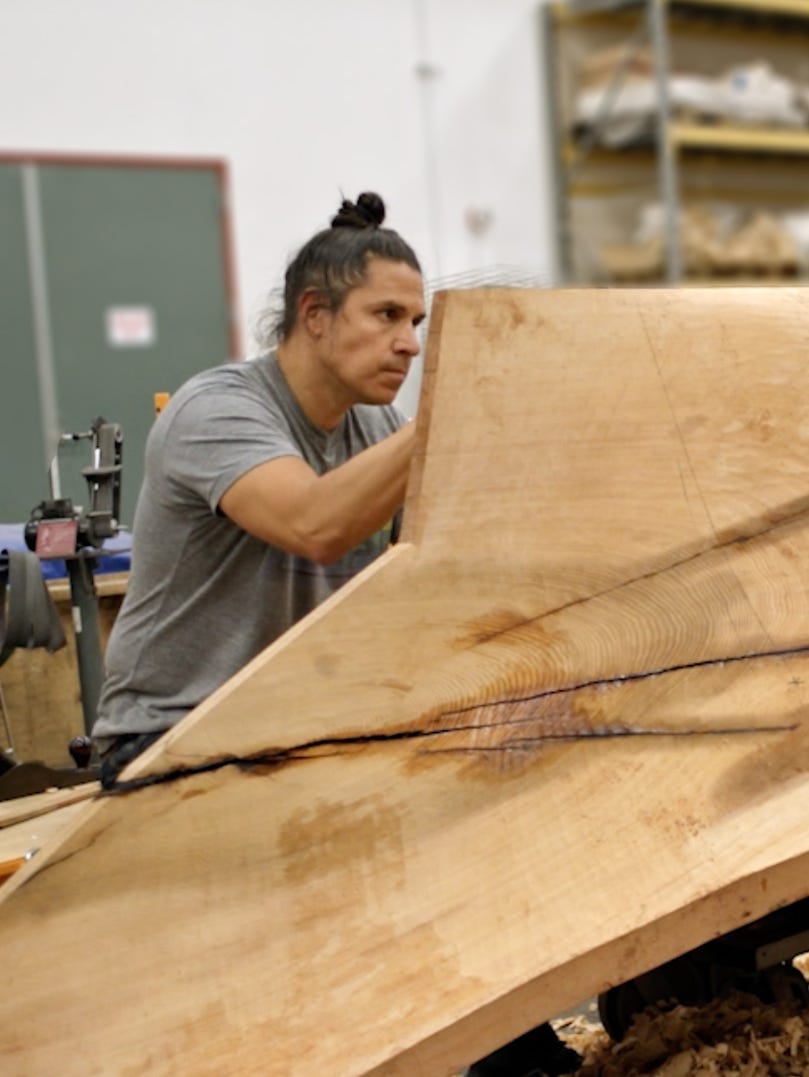FRANCISCO ROSAS, INTERNAL COMMUNICATIONS AND CONTENT PROJECT MANAGER: Thank you, Terry, for chatting with us for Pride Month. It has been a very thrilling one for the GLBT Historical Society. Can you share some of what the Society has been up to and the details of your reopening?
TERRY BESWICK, GLBT HISTORICAL SOCIETY DIRECTOR: Like other cultural institutions, we are, of course, so thrilled that we have been able to reopen after so many months of being closed, but for us it is especially sweet that our archives and museum were able to reopen to the public in time for Pride month. Our archives and special collections are among the largest collections of queer historical materials anywhere in the world and are typically visited by researchers, academics, and artists, but our small museum in the Castro neighborhood typically gets a couple thousand visitors every month, and even more in the summertime, which is a lot for about 1,600 square feet of exhibit space.
We were fortunate that we did not have to lay off any staff during the pandemic, and our small museum staff was quite adept at shifting our previous exhibitions and public programs online, to create some new online exhibitions as well. Similarly, while we were not able to accession or process any new collections, our archival staff were able to take previously digitized materials and create research guides and primary source sets that highlighted the broad diversity of our collections. These were things we were already working on, albeit slowly, but being shut out of our workspaces definitely accelerated the creation of online resources, and will continue to be a key part of our work.
A segment of one of the original 1978 rainbow flags rests in its case at the GLBT Historical Society Museum. Photograph by Andrew Shaffer.
FR: I’m so thrilled to see local spaces, but especially queer ones, re-opening after so long. What are some of the things a visitor can look forward to seeing at the Society’s Museum now that you have reopened?
TB: Probably the most exciting thing for me personally is our newest acquisition: a enormous fragment of one of the original rainbow flags that flew over the 1978 Gay Freedom Day Parade in San Francisco’s UN Plaza. It’s the only known piece to have survived, and we put it on display this month as part of the Performance, Politics and Protest: The Art of Gilbert Baker exhibition that went up at the museum in 2019. It was actually fortunate that we were able to keep up the Gilbert Baker exhibit throughout the pandemic as it provides important context for the flag exhibit, showing the trajectory of his development as an artist and activist.
The flag fragment was donated to us by the Gilbert Baker Foundation, which was formed to help preserve Baker’s legacy. They worked with us and with the family after Gilbert’s death in New York in 2017 to ensure that his papers, his art, and memorabilia were preserved. We couldn’t take everything from his apartment, and some of his things were shipped to his sister in Texas, which is where the original flag fragment had ended up before it was found and authenticated last year. It is now one of our most treasured artifacts, a seminal work of art that has such an amazing impact throughout the world.
Gilbert Baker holds the rainbow flag against a pink background (1989); photograph by Robert Pruzan, collection of the GLBT Historical Society. Courtesy of the GLBT Historical Society
FR: The Society collects and displays LGBTQ art, artifacts, histories, and voices, but you also work to make these more widely available. What kinds of organizations do you collaborate with, or lend objects and archival material to, to widen the scope of your mission?
TB: Also for Pride month, we collaborated with the Gilbert Baker Foundation on a bicoastal exhibit of other Pride flags, In Their Own Voices. The exhibit is installed throughout the month at both the Stonewall Inn in New York City and in the windows of Harvey Milk’s former Castro Camera store in San Francisco. The curator Charley Beal reached out to the designers of several different queer identity flags that have emerged after the rainbow flag and provided them the space to explain the inspiration and meaning behind their flags. It’s a great way to illustrate the non-heterogeneity of the LGBTQ movement in an inclusive way.
We frequently lend artifacts and images to museums in San Francisco and around the world, though of course this has been stalled during the pandemic. Recent local partnering museums include the Oakland Museum of California, the San Francisco Airport Museum, and the Contemporary Jewish Museum.
Our archives reach their widest audiences through the works of independent authors, filmmakers, and artists who draw on materials in our collections. Probably the most frequently accessed materials are photographs and video clips, though often producers will access the collections to research historical locations or stories. Recent major media have included the movie Milk, the ABC mini-series When We Rise, and the HBO series, Equal.
FR: These seem like projects with a lot of visibility. Especially locally, I have seen more and more queer stories in museum settings, whether it’s San Francisco drag legend Heklina in a video piece at the Asian Art Museum, or a couture denim gown by Mr. David/Glamamore included in the Contemporary Jewish Museum’s Levi’s exhibition. Is this something you have been seeing: more representation of queer stories in museums and similar spaces recently?
Couture denim gown by Mr. David/Glamamore for Juanita MOORE! in Levi Strauss: A History of American Style at the Contemporary Jewish Museum.
TR: I have a hard time being objective about this as I am so immersed in the culture of LGBTQ history, but a lot of people feel like there is more interest in our history these days. I think there are obviously a lot of LGBTQ folks working in major cultural institutions that speak up to ensure that our stories are included, and also audiences drive the conversation with their expectations. However, I have spent some time looking through major history museums looking for queer identities and stories and have been very disappointed. I think we have a long way to go before queer people with diverse backgrounds and races are openly identified and included in a way that represents their significance in history and culture.
FR: The Fine Arts Museums of San Francisco are conducting a research project on our exhibitions history, to re-examine how inclusive our exhibitions program has been. While we have organized monographic shows around queer artists like David Hockney and Keith Haring, I am sensitive to most of the queer representation being represented mostly by gay, white, cisgender male artists. Within museums, have you seen a greater diversity in the queer stories being told?
Installation view of Keith Haring: The Political Line at the de Young Museum
TB: Diverse representation of queer identities and histories can be challenging for museums for a number of reasons. First, we have to strive for representation of the full spectrum of sexualities as well as genders. That is a lot in and of itself, but when you bring in the intersections of race and ethnicity, class and regional origin, the challenge is compounded with the systemic biases in curation and structural limitations in collections.
I thought the Queer California: Untold Stories exhibition at the Oakland Museum did a pretty good job of diversifying their exhibition. They spent a lot of time and effort reaching out to collecting institutions like our own to collect a broad representation of stories, and filled in the gaps where necessary through targeted outreach. I was impressed by that overall, though I will say that in the area where I have the most personal knowledge, AIDS, I noticed a lot of gaps in their historical timeline. Despite taking up a lot of space, there was a level of detail missing around racial subgroups that I think would not have happened if a queer organization had the same level of resources.
Queer California: Untold Stories at the Oakland Museum of California. Photo: Odell Hussey Photography
It happens to us, too, with our exhibitions and public programs, and sometimes I ask staff or curators to dig a little deeper, but generally we’ve established a culture where it is the top priority. There are times when we are telling the story of a community or subculture that is not particularly diverse along race or gender lines, and I think those communities’ stories are also worthy of being told, but usually there is more if we look for it.
The key for us, as a history museum, is our community curation model, in which we invite lay historians or curators who are members of the community that is the subject of an exhibit to serve as the lead curator, and we match them with volunteer or staff curators and archivists that can help them in shaping their stories. That’s what inclusion looks like for me, and while it might seem like more work, I think it’s worth it. In this way, we build trusting relationships with community members who will then also join our board or donate materials to our archives.
FR: It’s not just about more representation and the diversity of that representation, but also about how the stories get told. Does diversity and inclusion behind the scenes (and in our museum workforce) affect how we tell these stories?
TB: One of my favorite exhibitions we did recently was the Two-Spirit Voices: Returning to the Circle, which celebrated the twentieth anniversary of Bay Area American Indian Two Spirits (BAAITS), an organization committed to activism and service for the Two-Spirit and ally communities of the San Francisco Bay Area. Curated in 2019 by BAAITS leaders Roger Kuhn, Amelia Vigil, and Ruth Villaseñor, it was really their exhibit, and we just offered technical and design support. The opening reception included a drumming circle and people were invited to join a special ceremony that recognized that we were all occupiers of their tribal ancestral land. It carried a lot of weight for me personally, and I felt proud to make space and give resources to allow their stories to be shared with each other and with the general community.
In many ways the LGBTQ community is a lot like the American Indian community, in that we are a collection of tribes with our own traditions and even languages. Much of our pre-modern history is also a mystery, often not recorded or destroyed by oppressors, and preserved only through oral histories. And as with indigenous people, I worry that our histories and cultures are at risk of being lost.
Showing the original 1978 rainbow flag exhibit at the reopening of The GLBT Historical Society Museum on June 4, 2021. Pictured (l-r): Senator Scott Wiener, Mayor London Breed, Gilbert Baker Foundation President Charley Beal, GLBT Historical Society Executive Director Terry Beswick, Treasurer Jose Cisneros, Supervisor Rafael Mandelman, and Castro LGBTQ Cultural District Manager Tina Valentin Aguirre. Photo by Garaje Gooch.
We’ve been working for several years towards the goal of establishing a full-scale museum of LGBTQ history and culture in San Francisco, and only recently we’ve begun to win some tangible support from the mayor and other elected officials that will hopefully allow us to actually acquire a site. The most persuasive arguments we’ve been able to make is that we are not growing for the sake of growth; we are building this new museum to un-erase all our diverse communities’ histories. We simply need more space and resources to be able to do that. We have some incredible and fabulous stories to tell that everyone will benefit from.
Terry Beswick is the executive director of the GLBT Historical Society. Learn more about the society at glbthistory.org.
Interview by Francisco Rosas, internal communications and content project manager, Fine Arts Museums of San Francisco. He is a member of the board of directors of the GLBT Historical Society.
